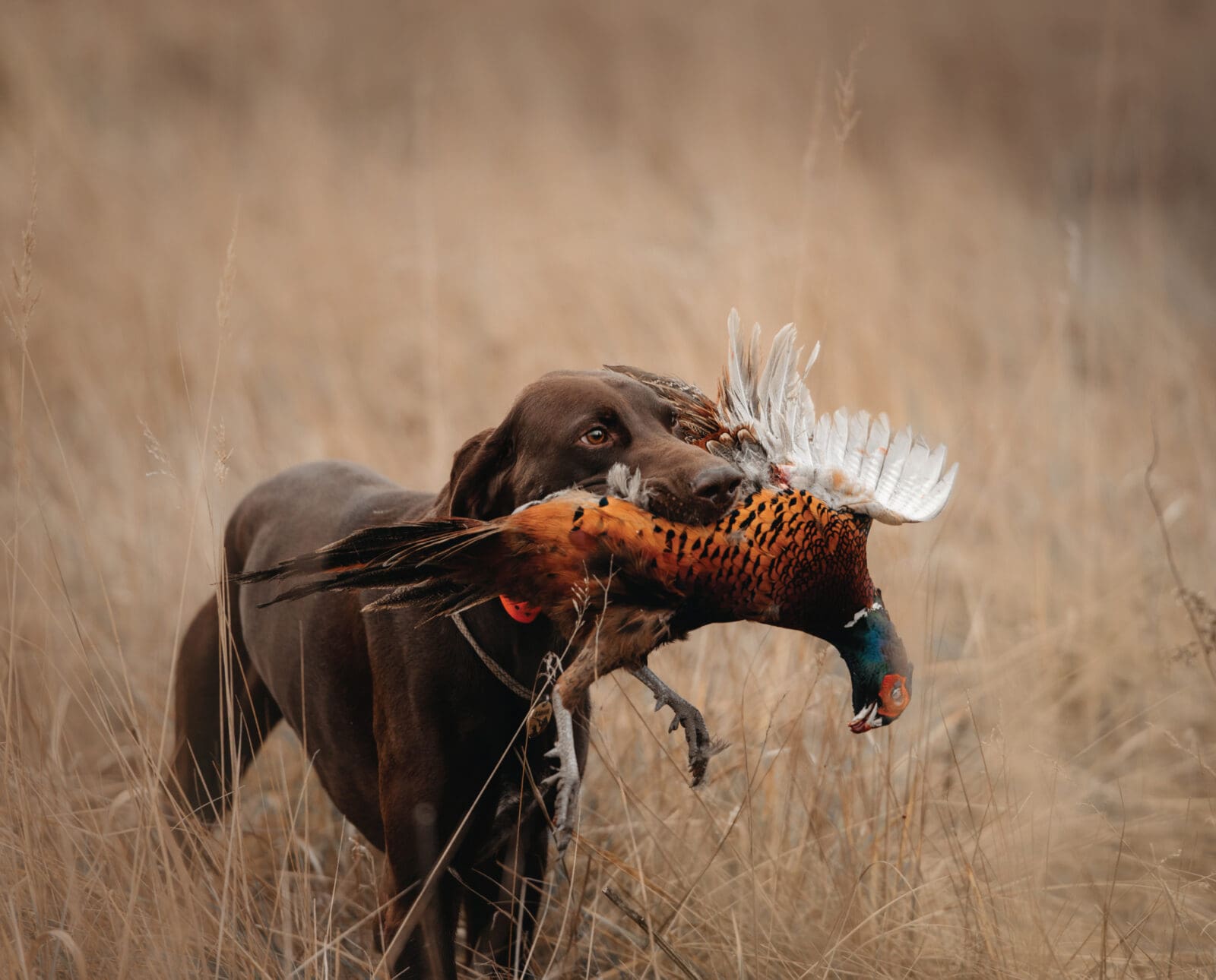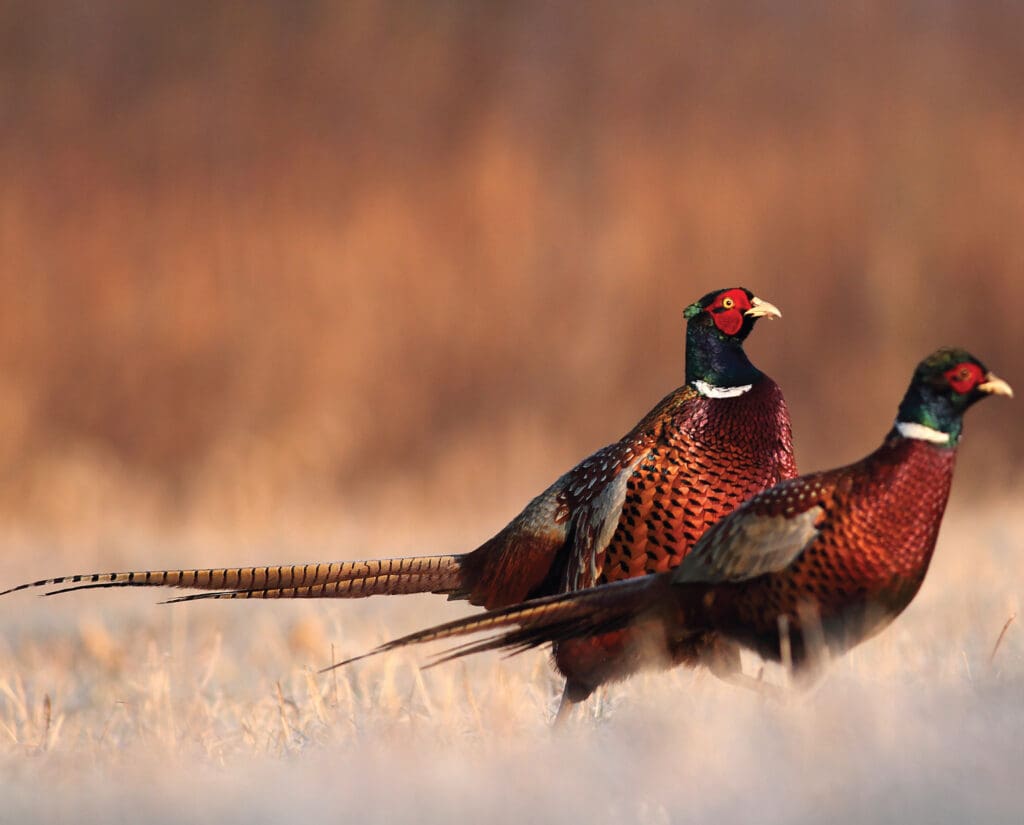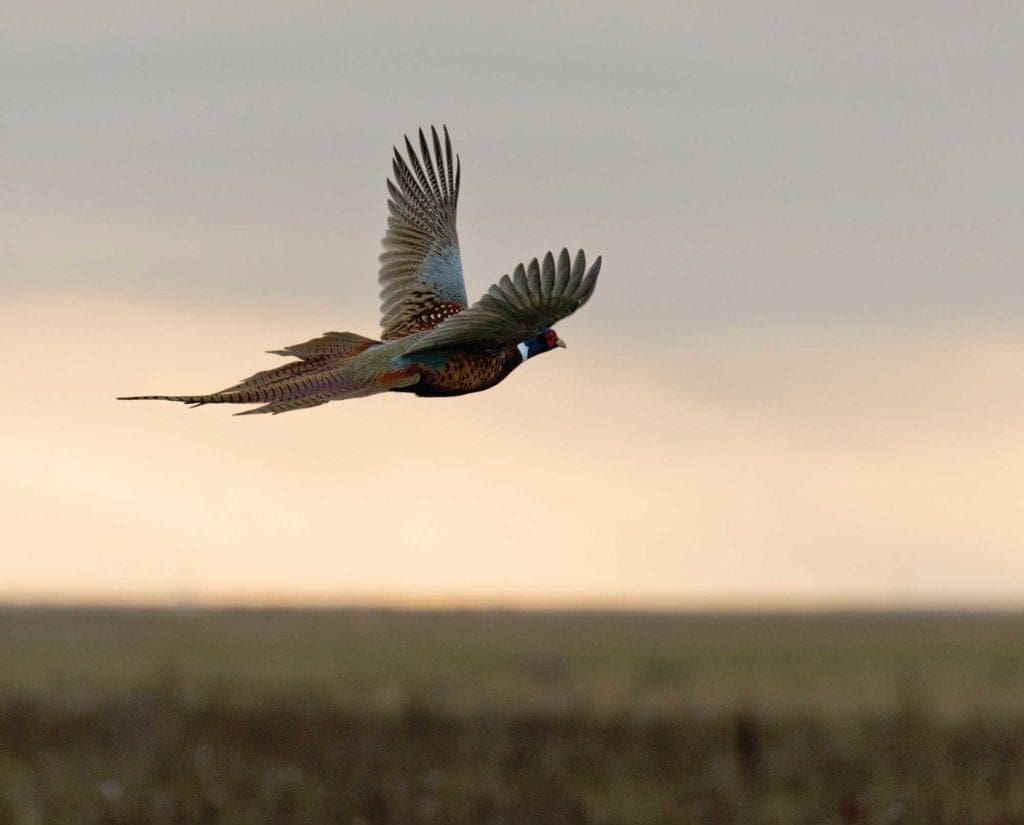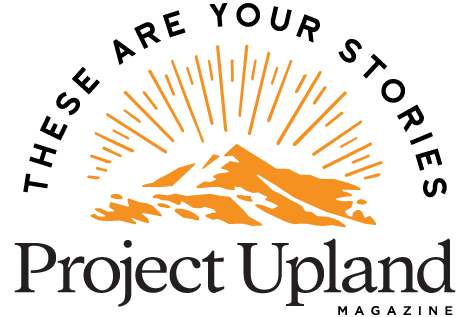Home » Pheasant Hunting » Tactics to Increase Public Land Pheasant Hunting Success
Tactics to Increase Public Land Pheasant Hunting Success

Raised in the upland bird mecca of Kansas, the passion…
Use stealth, pressure, and notetaking to your advantage when hunting public land pheasants this fall
Pheasants bring out every emotion for most upland enthusiasts, including awe, joy, and frustration. Add in the difficulty of hunting these regal birds on public lands where roosters can be more intelligent than an MIT grad, and your emotions might include astonishment and downright rage.
Listen to more articles on Apple | Google | Spotify | Audible
Hunters spend thousands of hours hunting pheasants across public lands each year. State-owned wildlife areas, federally owned national grasslands and wetlands, and state-leased private lands in walk-in hunting programs provide hunters with an incredible amount of real estate to pursue the Midwest’s most prized game bird. If you plan on hunting public land pheasants this year and want to keep your frustration down to a minimum, try hunting good pheasant cover, using hunter pressure to your advantage, taking notes, and being stealthy.
Habitat and Weather Affect Pheasant Hunting
Like most game birds, pheasants need three basic things: food, cover, and water. Most of their water comes from the food they eat, dew, or snow; free-standing water is rarely necessary. Pheasant food varies throughout the year, but during hunting season, it typically comes in the form of agricultural grains like corn, wheat, milo, sunflowers, and soybeans. Pheasants that reside in grassland habitat will eat forb seeds and large seeds like rosehips or other wild berries when available.
Cover, and its proximity to adjacent food sources, is what public land pheasant hunters should focus on the most. If you asked pheasant hunters to describe pheasant cover, most would describe a thick, grassy Conservation Reserve Program (CRP) field. Although many birds get pointed and flushed by bird dogs in CRP fields every season, exclusively hunting CRP fields all day often yields a light game bag. Pheasants use thick, tall grass fields throughout the fall and winter, but weather and hunting pressure will result in shifts away from these obvious locations.
When pheasants roost in grass fields, including CRP, they often exit those fields soon after daylight in pursuit of food or due to hunter avoidance. Due to the predictable morning exodus of birds from dense grass fields on public land, hunting CRP fields at dawn will usually yield the best results. CRP fields in a sea of pasture ground or green winter wheat will rarely hold many birds. Therefore, look for CRP fields adjacent to a food source like crop stubble, standing grain, or near food plots.
Weather plays a significant role in the density of cover pheasants will use on any given day. During mild weather, thick grass fields like CRP may get little to no use by wily roosters. Pheasants do not have to roost in the grass, and during mild weather, they may choose to roost in a weedy field or even just spend the night in a crop stubble field. I have seen countless groups of orange-clad hunters hunting CRP fields all day during 60-degree weather, wondering why they aren’t seeing any birds. When faced with unseasonably warm weather, hunting woody draws dominated by plum thickets or walking tree rows can provide some bird contacts. If you are part of a large hunting party, pushing crop stubble fields with blockers strategically placed on edges or corners can also offer shooting opportunities.
Cold weather can help keep birds from spending all day in crop fields and force them into heavier cover. This reduces the acres that hunters have to consider when selecting spots to hunt. The previously discussed CRP fields may hold birds several hours a day during cold or snowy weather. Cattail patches are another common hangout during inclement weather. If snow is present, use it to find tracks of pheasants and other hunters. Obviously, fresh pheasant tracks can let you know you are in the right location. Seeing fresh tracks from other hunters made earlier in the day can provide insight into what portion of the field your upland brethren hunted. Don’t be afraid to walk parts of the field others skipped; oftentimes, pheasants think they have found safety in such spaces.

How to Use Hunting Pressure to Your Advantage When Hunting Pheasants
Pheasants are hard enough to corral on private land. However, pressured, publicly accessible birds can act like a completely different species. One option is to attempt to find less pressured areas within a wildlife area, or if hunting smaller walk-in hunting properties, look for isolated parcels or ones further from town. Some walk-in areas have little to no habitat near the road and require a dead head walk across no man’s land to get to some usable pheasant cover. I love these spots because countless hunters pass them up, leaving some roosters for hunters like myself who are willing to go the extra mile.
Hunter avoidance can result in birds using some unlikely places. I’ve seen birds hang out in timbered areas with just enough grass or weeds to provide roosting cover and food. Isolated pockets of cover, like an old homestead, a junk pile interspersed with weeds, or an old, abandoned cattle corral are always worth the time to send the hunting dog in for a sniff.
E-scouting, Note Taking, and Shaking Up Your Strategy for Public Land Pheasants
Scouting possible areas to hunt has never been easier. Whether using Google, OnX, Basemap, or some other mapping app, today’s hunter can see all kinds of details from several states away. Use these maps to identify where grass cover and crop fields meet. Identifying remote draws, tree rows, and isolated pockets of cover can provide an advantage many other hunters may overlook. Find those walk-in areas that require a dead head to get into the quality cover.
Keeping notes is also paramount, particularly if you intend to return to the same general area year after year. Personal experiences in the field are the ultimate litmus test for measuring the quality of a location and tracking how those birds react. My truck usually has paper maps scattered across the dashboard, covered in various magic marker colors. This helps me keep track of which spots were successful year after year.
After hunting a spot multiple times, it is not uncommon to discover the birds usually squirt out a particular place, somehow avoiding shot opportunities. Oftentimes, public land birds refuse to get pushed to the corners or edges of fields to waiting blockers, particularly later in the season. They have learned from multiple groups of hunters who all hunt the field the same way.
In these cases, birds often bail out the side of a woody draw, using a small point as their travel lane. I’ve also witnessed birds that seem to know the distance to the blockers positioned at the field corners and execute their escape flawlessly by taking flight exactly 100 yards or more from both the walkers and the blockers. If you’re hunting educated birds, look for opportunities to mix up your hunting parties’ strategy. If there is a low swale in the field, push the swale and have blockers down in the swale on the inside of the field’s edge. Don’t be afraid to post one or two blockers on the corner of a draw while others may be posted several hundred yards away at some other feature. Nothing beats knowing how birds react based on previous hunts at the same location.

Stealth is Key to Hunting Public Land Pheasants
Outsmarting a public land rooster requires a certain level of gamesmanship. I always recommend trying to hunt as quietly as possible. However, if you are chasing public land roosters into the late season, being stealthy can make the difference between an afternoon walk with an empty game bag and a dinner of pheasant over rice.
Pheasants use sound and sight to execute their chess moves against their orange-colored opponents. Don’t slam truck doors or tailgates. Don’t yell at your dogs or hunting buddies. Don’t park the truck right at the corner you are blocking. These actions put birds on high alert, giving them the advantage before the dogs ever entered the field. Drop blockers off or have them park up the road and walk back to their blocking location. I will even go as far as walking in the opposite ditch, using the road as a visual screen to reach a blocking location, limiting the possibility of pheasants watching my approach.
Large hunting parties can make pushing large fields effective. However, during the late season, I prefer to hunt alone or with one other person. Hunting alone or with a very small party is usually much stealthier. It also allows me to follow my dogs across wide open spaces, trusting their nose and not trying to force birds into any one specific direction or location. When I see the tell-tale sign that one of my dogs is birdy and is trailing a running bird, I try to stay close enough in pursuit to have a shot when the bird finally flushes. Sometimes, the trailing only goes a short distance; other times, it lasts several hundred yards.
If you are fortunate enough to go on a pheasant hunt this year, keep a few of these tips in mind. If you find yourself hunting similar habitats in field after field with limited success, try something different. If you succeed, pay attention to the habitat and the time of day. Ask yourself why the birds were there, and then look for similar scenarios to replicate the success. Regardless of your tactics, just know there will always be a few public land roosters that will remain undefeated.
Raised in the upland bird mecca of Kansas, the passion for upland birds was born at a young age for Kyle Hedges. He has now spent over 25 years managing upland game habitat on public lands in Kansas and Missouri for State Conservation Agencies. He also works as a Habitat Consultant for Land and Legacy, assisting landowners across the country with improving their properties.



